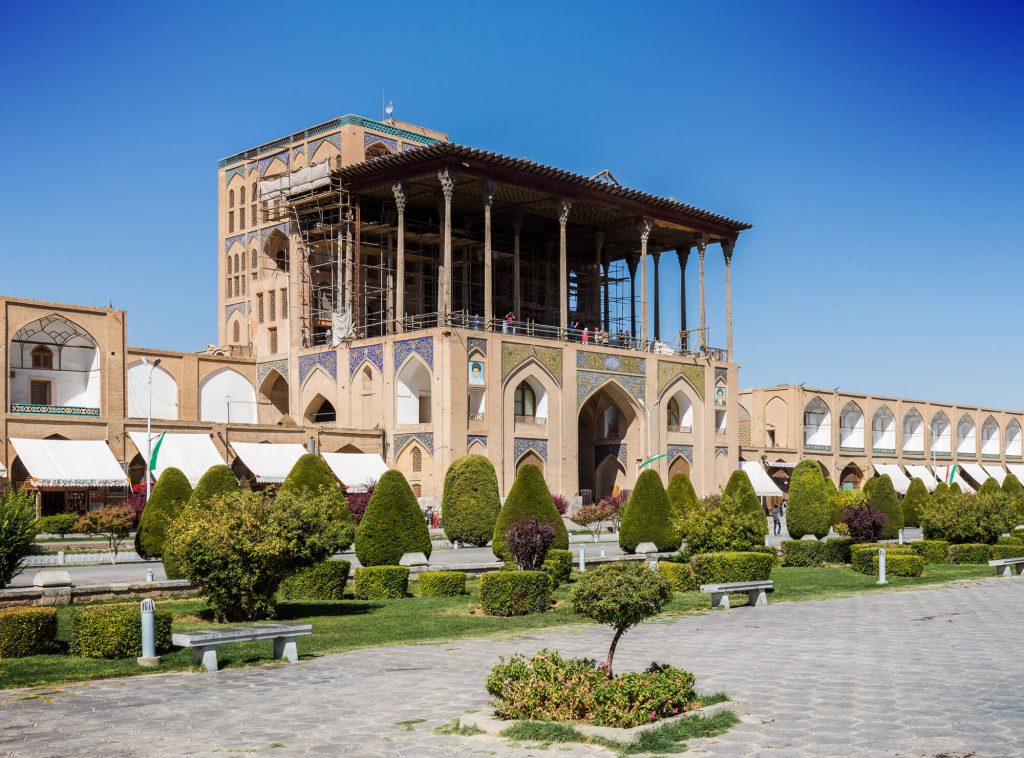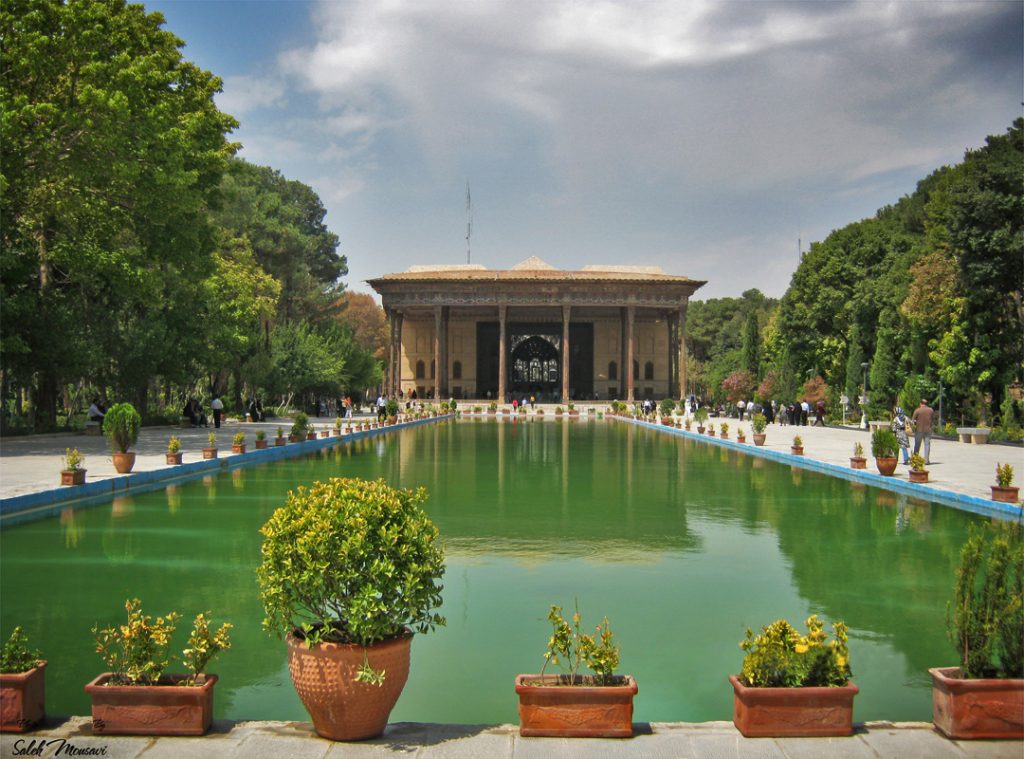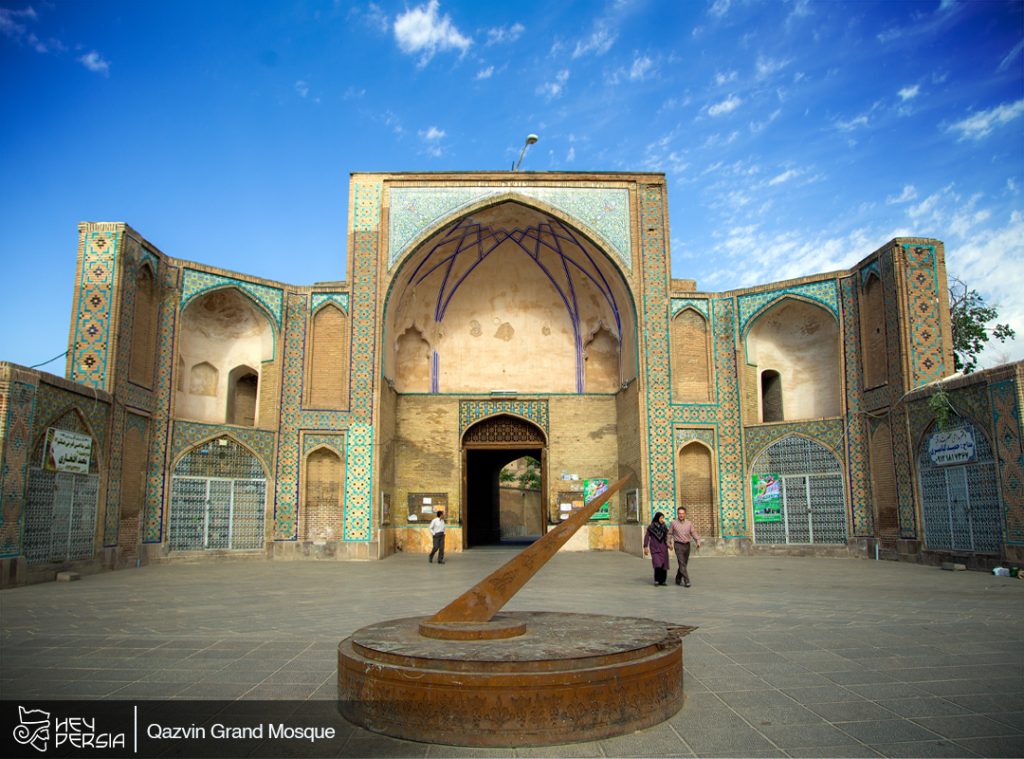Dowlat Abad Garden in Iran, Yazd, is a 70,000 square meter garden located in the heart of the desert in Yazd city. This garden, which included in the list of national works of Iran in 1346, has the world’s tallest clay windmill at a height of 33.8 meters in its heart. Today, we at the Hey Persia blog want to talk to you about Dowlat Abad Garden in Yazd and provide you with everything we have researched about it. If you are also to get more information, stay with us.
Where is Dowlat Abad Garden in Iran?
Yazd province is one of the desert provinces of Iran, which has many historical and cultural monuments in its heart. This land is one of the important historical crossings of Iran and was located on the Chapari road during the Achaemenid period. Roohnawaz Garden of Dowlat Abad is located on Rajaee St., Chahar Manar neighborhood, Hosseiniyeh alley. During the Qajar period, the garden connected to the Chaharmanar gate and was located outside the city. But with the passage of time and the development of the city in the Pahlavi period, it removed from the outskirts and gradually moved to the center of the city.
How was Dowlat Abad garden of Yazd built?
Wherever there is water, there will be prosperity and greenery. Building a green garden in the heart of the desert is a unique and different phenomenon that has been surprising the world for a long time. This 7-hectare garden was by “Mohammed Taqi Khan Bafqi” as the Great Khan in 1160 AH. Mohammad Taqi Khan Bafqi was the head of the Khawanin family of Yazd, and before he built the garden, he first built a 65-kilometer aqueduct to supply water to the garden.
Dowlat Abad Qanat came to Yazd along a 50 km route from Mehriz and on the way, it passed through several agricultural lands and various gardens and water mills until it finally reached Chahar Minbar or Dowlat Abad Garden. The historical aqueduct of Dowlat Abad garden consisted of 5 aqueducts and originated from the heights of Mehriz. This 200-year-old aqueduct reached Yazd city after traveling about 50 kilometers and was to irrigate the garden. Of course, these days, garden irrigation is through a semi-deep well.

Dolat Abad garden in Iran architecture, Yazd
The architecture of Dowlat Abad garden consists of two rectangular sections, inner and outer, which are perpendicular to each other. The inner part of Dowlat Abad garden was the ruler’s residence and the outer part was used for government ceremonies, sports events, etc. The inner part of the garden includes the vestibule building or the summer pavilion, the harem, the Ayin garden, the kitchen, the observation tower, the private water tank, the summer and winter stables. The outer part of the garden also includes Jalokhan and Sardar, Hall of Mirrors, Tehrani Mansion, two bazaars and a public reservoir.
Sights of Dowlat Abad Garden in Iran, Yazd
In this section, we will review the most important features of the 7-hectare garden of Dowlat Abad:
1- Windbreaker
The most important sight of Dowlat Abad garden is its 33.8 meter octagonal windmill. It is known as the tallest clay windmill in the world.
2- Garden aqueducts and water supply system
Dowlat Abad garden aqueduct, besides irrigation of the garden, was also very effective in the beauty of the building, fountains and ponds. In addition to the aqueduct, a water well with a depth of 150 meters was also built on the eastern side of the building, which water was used during the drought so that the people of the garden would not suffer from dehydration.
3- Dowlat Abad garden fountain
Among the prominent architectural features of Dowlat Abad garden is the presence of water on the surface of the garden as the main role. The water boils from a marble basin under the wind tower of the Hasti building and flows into a basin in the middle. Three Quebec marble chests are located in front of the sash of the rooms, which are designed and cut in such a way that they create waves in the path of water and make the volume of water more visible. The breast of the cisterns are the carved stones behind the gully, which make the water look more voluminous.
The water from each of these chests enters a small pond known as the Kalgi pond, and then flows into the large fountain in the garden. The fountain located in the main axis of the garden and its dimensions are proportional to the height of the wind tower of the Hasti mansion. So that the image of the garden mansion completely reflected in the water. The water enters Behesht Ayan garden from under the Sardar mansion and flows into the 12-sided pool in the north of the mansion and the water in the 12-sided pool directed to 3 rectangular pools on the other three sides of the garden and finally. The water of these pools flowed in the streets and settlements and used for agriculture and irrigation of trees, aqueducts, etc.

Dowlat Abad Garden in Iran
Dowlat Abad Garden is one of the 9 Iranian gardens that have registered in UNESCO. This 7-hectare garden was in 1160 AH by Mohammad Taqi Khan Bafqi. Before the construction of Dowlat Abad Garden, Taqi Khan first built a 65 km aqueduct there to direct the water of the garden from Mehriz to Yazd and the current location of the garden. The tallest clay windmill in the world is located in Dowlat Abad Garden, and as mentioned, the water of the garden supplied from its 200-year-old aqueduct.
If you have also visited this charming and spectacular garden and have more information about it, you can write them in the comments and suggestions section and provide them to us. Thank you in advance for your cooperation. Hey Persia tourism magazine has launched with the aim of getting to know more Iranians who are enthusiastic and interested in this land and water. If you also want to know more about our vast country, you can register on Hey Persia website and learn about the most important events and tourist places of our country.





